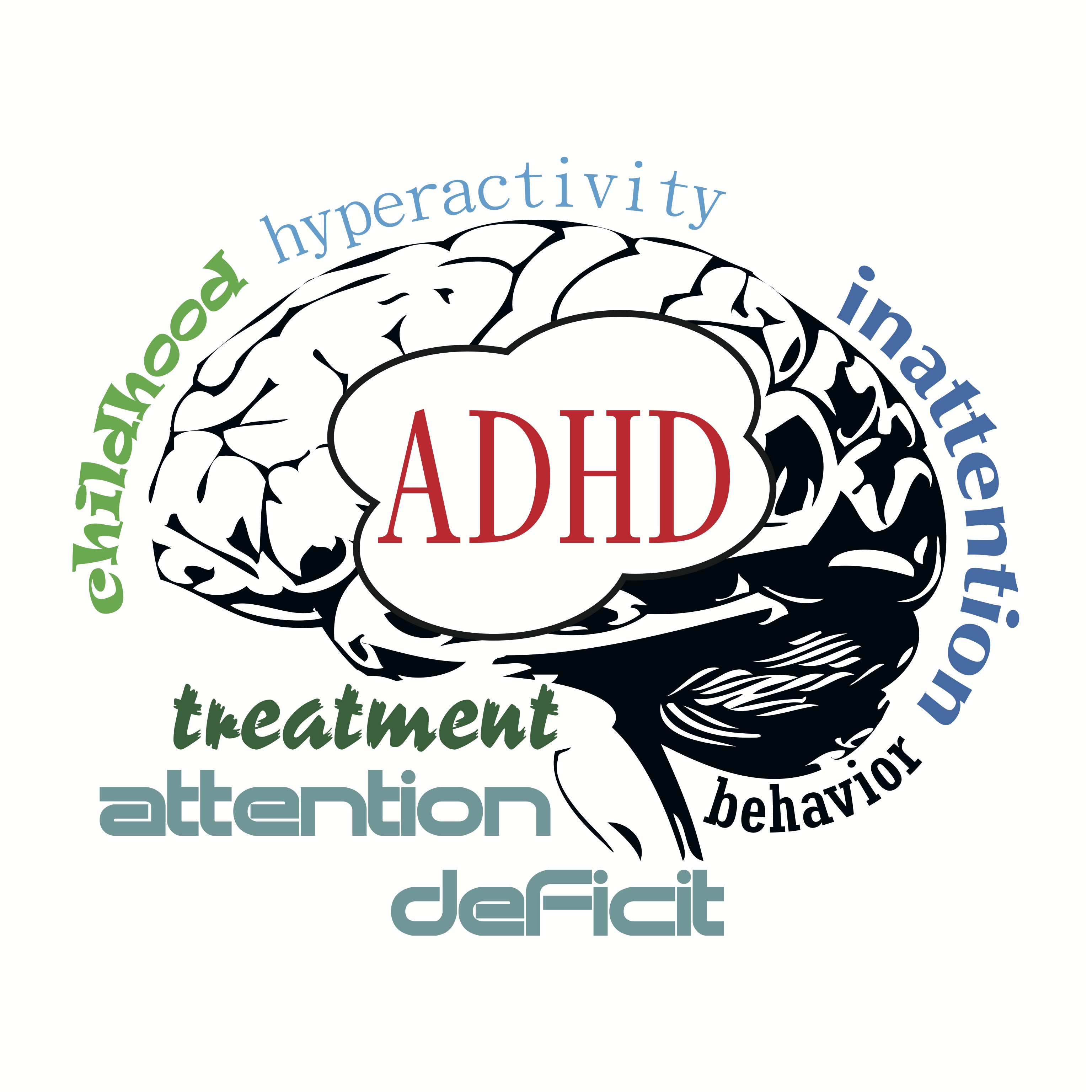Inside Our ADHD Minds: Understanding The ADHD Brain

Table of Contents
- Neurological Differences in the ADHD Brain
- Neurotransmitter Imbalances
- Brain Structure and Function
- Genetics and Heritability
- Common Symptoms and Their Neurological Basis
- Inattention
- Hyperactivity and Impulsivity
- Emotional Dysregulation
- ADHD Brain: Strengths and Compensatory Mechanisms
- Creativity and Innovation
- Adaptability and Resilience
- Passion and Intensity
- Conclusion
Neurological Differences in the ADHD Brain
The ADHD brain isn't simply a "lazy" or "unmotivated" brain; it functions differently. Research reveals distinct neurological variations that contribute to the characteristic symptoms of ADHD.
Neurotransmitter Imbalances
Dopamine and norepinephrine, crucial neurotransmitters impacting attention, focus, and motivation, play a significant role in ADHD. Imbalances in these neurochemicals are implicated in the core symptoms.
- Lower dopamine receptor density: This means the ADHD brain may have fewer receptors to receive and process dopamine, impacting the brain's reward system and motivation.
- Impact on reward pathways: The reduced dopamine signaling can affect the brain's ability to experience and anticipate rewards, making it harder to stay focused on tasks that don't provide immediate gratification.
- Difficulty with executive functions: Executive functions, such as planning, organizing, and working memory, heavily rely on dopamine, and their impairment is a hallmark of ADHD.
Brain Structure and Function
Neuroimaging studies have identified structural differences in the brains of individuals with ADHD. These differences aren't necessarily abnormalities, but variations in development and function.
- Reduced volume in certain brain regions: Areas like the prefrontal cortex (responsible for executive functions) and the basal ganglia (involved in motor control and reward processing) may show reduced volume.
- Differences in connectivity between brain areas: The communication pathways between different brain regions may be less efficient, impacting the coordination of cognitive processes.
- Impact on working memory: The ability to hold and manipulate information in mind—crucial for many daily tasks—is often impaired due to these structural and functional variations in the ADHD brain.
Genetics and Heritability
ADHD has a significant genetic component. Family history is a strong predictor, suggesting a heritable predisposition.
- Heritability estimates: Studies suggest a high heritability for ADHD, meaning genes play a substantial role in its development.
- Gene-environment interactions: While genes contribute significantly, environmental factors also interact to shape the expression of ADHD traits.
- Importance of genetic counseling: Genetic counseling can be valuable for families with a history of ADHD, providing insights into risk factors and inheritance patterns.
Common Symptoms and Their Neurological Basis
The hallmark symptoms of ADHD—inattention, hyperactivity, and impulsivity—are rooted in the neurological variations discussed above.
Inattention
The difficulty sustaining attention, distractibility, and disorganization characteristic of ADHD are linked to the neurotransmitter imbalances and structural differences mentioned previously.
- Difficulty filtering irrelevant stimuli: The ADHD brain may struggle to filter out distracting information, leading to difficulty focusing on the task at hand.
- Impaired working memory: The reduced efficiency of working memory makes it harder to hold information in mind and complete complex tasks requiring sustained attention.
- Challenges with sustained attention tasks: Tasks requiring prolonged focus, such as reading or completing homework, are particularly challenging for individuals with ADHD.
Hyperactivity and Impulsivity
The restless energy, fidgeting, and impulsive actions often associated with ADHD stem from dysregulation in the brain's inhibitory control systems.
- Dysregulation of inhibitory control systems: The brain's ability to suppress inappropriate behaviors or thoughts is impaired, leading to impulsive actions and difficulty with self-control.
- Challenges with response inhibition: The ability to stop oneself from acting on an impulse is compromised, resulting in impulsive decisions and behaviors.
- Difficulty with emotional regulation: Impulsivity often extends to emotional responses, making it difficult to manage frustration, anger, and other strong emotions.
Emotional Dysregulation
The ADHD brain often struggles with emotional processing, contributing to difficulties managing a range of emotions.
- Impact on social interactions: Emotional dysregulation can negatively affect social interactions, leading to misunderstandings and challenges in relationships.
- Challenges with emotional regulation strategies: Learning and implementing strategies to regulate emotions can be challenging for individuals with ADHD.
- Increased risk for co-occurring conditions: ADHD frequently co-occurs with conditions like anxiety and depression, further highlighting the impact on emotional well-being.
ADHD Brain: Strengths and Compensatory Mechanisms
While challenges exist, the ADHD brain also possesses remarkable strengths and a capacity for adaptation.
Creativity and Innovation
The ADHD brain's unique wiring can fuel creativity, innovation, and unconventional thinking.
- Hyperfocus: The ability to become intensely focused on a task or interest can lead to remarkable productivity and deep engagement.
- Ability to connect seemingly unrelated ideas: The less structured thought processes can lead to novel insights and creative problem-solving approaches.
- Innovative approaches to problem-solving: Individuals with ADHD often find innovative solutions to problems, thinking outside of conventional frameworks.
Adaptability and Resilience
Individuals with ADHD often develop impressive coping mechanisms and strategies to navigate their challenges.
- Development of compensatory strategies: Many develop strategies to manage their symptoms, such as using organizational tools, breaking down tasks, and seeking support.
- Increased adaptability in changing environments: The flexible thinking often associated with ADHD can make individuals more adaptable to change and uncertainty.
- Resilience in the face of adversity: Overcoming the challenges of ADHD often fosters resilience and a strong capacity to cope with difficulties.
Passion and Intensity
The ADHD brain often exhibits intense focus and passion in areas of interest.
- Hyperfocus on specific tasks or interests: When engaged in something captivating, individuals with ADHD can display remarkable concentration and dedication.
- Deep engagement and immersion in activities: Their engagement goes beyond simple interest; it's characterized by deep immersion and a strong sense of purpose.
- Strong drive and determination: This intense focus can fuel a strong drive and determination to achieve goals, even in the face of obstacles.
Conclusion
Understanding the ADHD brain requires acknowledging both its challenges and its remarkable strengths. The neurological variations underlying ADHD are complex, impacting attention, impulsivity, and emotional regulation. However, the same brain structures and neurochemical processes that contribute to these difficulties also underpin creativity, adaptability, and intense passion. Understanding your ADHD brain is crucial for effective management and harnessing its unique potential. Learn more about managing your ADHD brain by exploring resources for support and connecting with professionals who specialize in ADHD. [Link to relevant resource 1] [Link to relevant resource 2] Let's continue to demystify the ADHD brain and celebrate its incredible capabilities.

 Community Gathers To Remember 15 Year Old School Stabbing Victim
Community Gathers To Remember 15 Year Old School Stabbing Victim
 Rossiysko Myanmanskiy Delovoy Forum V Moskve Klyuchevye Sobytiya I Perspektivy
Rossiysko Myanmanskiy Delovoy Forum V Moskve Klyuchevye Sobytiya I Perspektivy
 Angelas Revenge Ali Larter Discusses Season 2 Of Show Name
Angelas Revenge Ali Larter Discusses Season 2 Of Show Name
 Eintracht Braunschweig Jannes Horn Und Die Geschichte Seiner Zeit Beim Rivalen Hannover 96
Eintracht Braunschweig Jannes Horn Und Die Geschichte Seiner Zeit Beim Rivalen Hannover 96
 Sabalenkas Madrid Open Win A Comprehensive Victory Over Gauff
Sabalenkas Madrid Open Win A Comprehensive Victory Over Gauff
